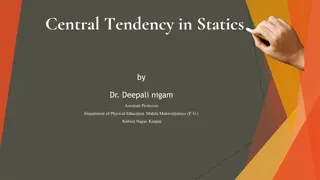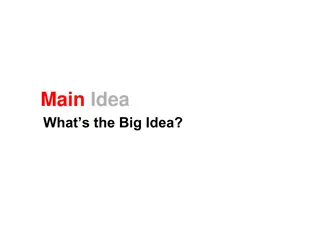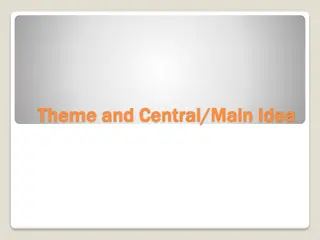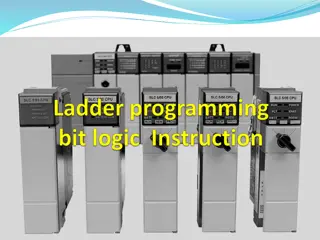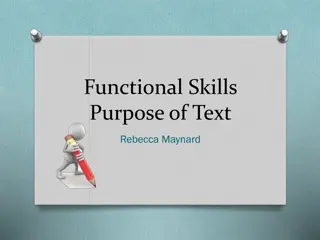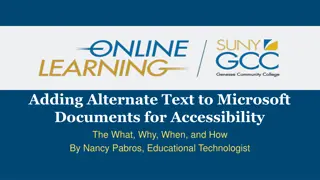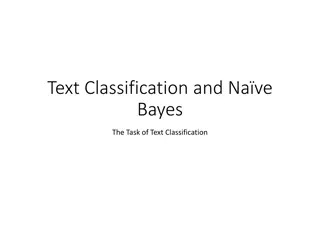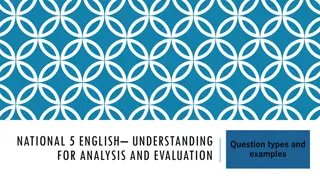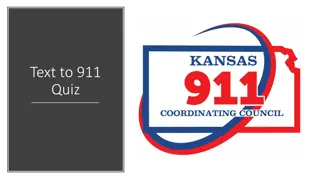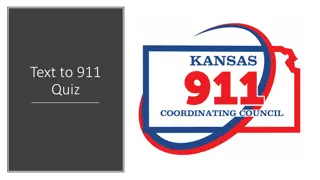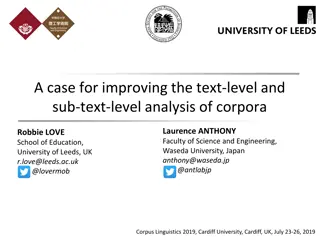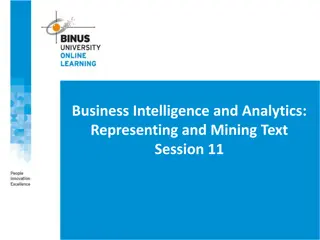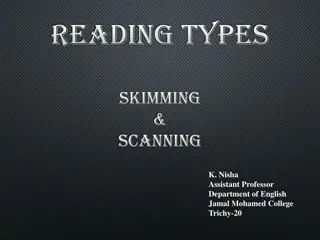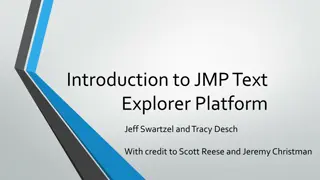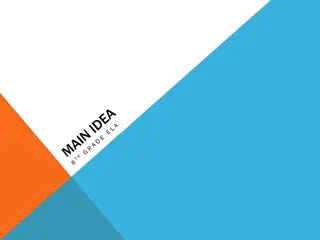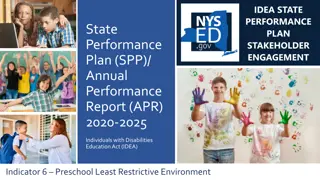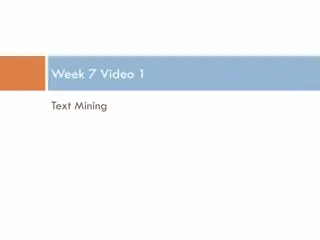Understanding Central Idea and Objective Summary in Text Analysis
Determining the central idea involves deciphering the author's main point about a topic, while analyzing its development delves into how supporting ideas are interconnected. Providing an objective summary requires highlighting key details succinctly, excluding personal opinions. The process entails recognizing the central idea, identifying crucial details, and conveying them clearly in your own words.
Download Presentation

Please find below an Image/Link to download the presentation.
The content on the website is provided AS IS for your information and personal use only. It may not be sold, licensed, or shared on other websites without obtaining consent from the author. Download presentation by click this link. If you encounter any issues during the download, it is possible that the publisher has removed the file from their server.
E N D
Presentation Transcript
CENTRAL IDEA, SUPPORTING DETAILS, AND OBJECTIVE SUMMARY CLASS NOTES
PART ONE: I CAN DETERMINE A CENTRAL IDEA OF A TEXT AND ANALYZE ITS DEVELOPMENT OVER THE COURSE OF THE TEXT INCLUDING ITS RELATIONSHIP TO SUPPORTING IDEAS Key Vocabulary DETERMINE: Decide, figure out CENTRAL IDEA: The chief point an author is making about a topic; the author s primary message. Sometimes the central idea is stated, but sometimes it must be inferred. ANALYZE: Study closely; break down into key parts DEVELOPMENT: The building of an idea/ideas throughout a text. RELATIONSHIP: A connection between two or more ideas, events, individuals, etc. SUPPORTING IDEAS: Facts, statements, specifics, and examples that clarify, explain, and describe the central idea.
PART ONE: I CAN DETERMINE A CENTRAL IDEA OF A TEXT AND ANALYZE ITS DEVELOPMENT OVER THE COURSE OF THE TEXT INCLUDING ITS RELATIONSHIP TO SUPPORTING IDEAS To determine a central idea of a text means to figure out the author s main point or message about a topic. Examine the title and any blurbs included before the body of the text Pay close attention to the opening and closing paragraphs What is the topic? Why has the author written about the topic (purpose inform, entertain, persuade)? What point or points has the author made about the topic?
PART ONE: I CAN DETERMINE A CENTRAL IDEA OF A TEXT AND ANALYZE ITS DEVELOPMENT OVER THE COURSE OF THE TEXT INCLUDING ITS RELATIONSHIP TO SUPPORTING IDEAS When you analyze its [a central idea s] development over the course of the text including its relationship to supporting ideas you closely study how the author has built his or her main point/primary message. You find examples in the text that help the author emphasize his or her main point about a topic. Look at the body paragraphs of the text. What examples is the author using to make his or her point? Think about the who, what, when, where, why, and how about the topic.
PART TWO: [I CAN] PROVIDE AN OBJECTIVE SUMMARY OF THE TEXT. To provide an objective summary, you must Determine the central idea Find important details that the author uses to develop the central idea and communicate them in your own words Be clear, concise, and brief Leave out minor details and your own personal opinion
WRITING AN OBJECTIVE SUMMARY Step One--Topic Sentence Name It: a. Identify the title of the text and the author. b. Use one of the following summary verbs: shows, describes, explains, discusses, explores, illustrates, teaches, etc. c. Communicate the author s central idea. Step Two Essential/Key Ideas Pick 1-2 supporting details from the beginning, middle, and end of the text to show how the author develops the central idea. USE YOUR OWN WORDS. Step Three Concluding Sentence Wrap up the objective summary.




